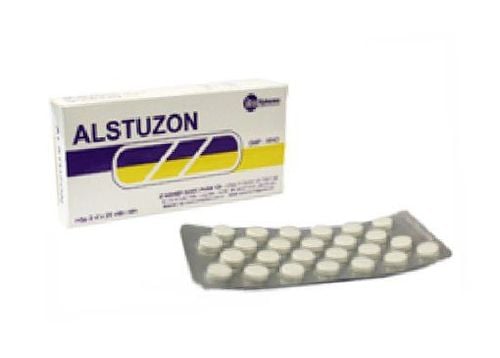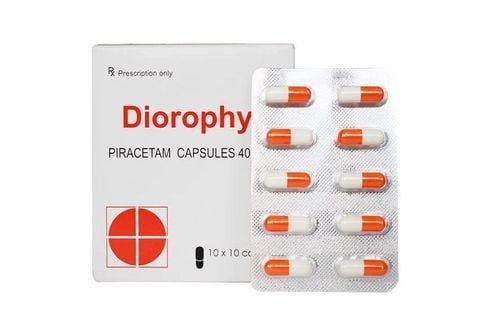This is an automatically translated article.
Mirgy belongs to the group of psychotropic drugs, indicated in the treatment of epilepsy and neuropathic pain of various etiologies. So how to use Mirgy? Let's find out the necessary information about Mirgy through the article below.
1. What is Mirgy?
Mirgy medicine contains the main ingredient Gabapentin with a concentration of 100mg and other excipients just enough provided by the manufacturer. The drug is prepared in the form of hard capsules, packed in a box of 1 blister, each blister has 10 tablets.
2. What disease does Mirgy treat?
Mirgy is indicated for the treatment of the following cases:
Treatment of neuropathic pain in people over 18 years of age due to various causes such as: Neuropathic pain caused by Herpes infection, neuropathy due to diabetic complications peripheral, trigeminal neuralgia. Adjuvant treatment of partial seizures with or without secondary generalization in patients over 12 years of age. Treatment of partial epilepsy in pediatric patients 3 to 12 years of age. On the other hand, Mirgy drug is contraindicated in the following cases:
Allergy to active ingredient Gabapentin or other excipients in the composition of the drug. Children under 3 years old.
3. Dosage and how to use Mirgy
Mirgy drug is in the form of hard capsules, taken orally. Food does not affect the absorption of the drug, so the patient can take the drug with or without food.
Below is the recommended dose of Mirgy:
Neuropathic pain (adults over 18 years old): Initial dose on day 1 is 300mg/time/day, day 2 is 300mg/time, daily 2 times, the third day is 300mg/time, 3 times a day. The dose can then be increased to 300mg/day to a maximum dose of not more than 1800mg/day, divided into 3 doses. It is not necessary to give equal doses. Epilepsy: Adults and children over 12 years of age: 300mg/time/day may be used on the first day. The dose may then be increased to 300 mg/day until effective seizure control is achieved, usually 900-1200 mg/day. A maximum dose of 2400 mg/day may be used in some patients. Children from 3 to 12 years old: Mirgy can be used in the form of 250mg/5ml oral solution to treat children weighing 25kg or those who cannot swallow capsules. The recommended starting dose is 10-15mg/kg, increased after about 3 days to 40mg/kg/day for children 3 to 4 years old or 25-35mg/kg/day for children 5 years of age or older, divided Do many times to drink (3 times/day). Patients with special medical conditions: Patients with renal impairment: Dosage adjustment according to creatinine clearance is necessary for patients with renal impairment who have neuropathic pain or seizures. The above dosage is for recommendation only. The specific dose depends on the condition and the progress of the disease so that the doctor can prescribe the appropriate dose. Therefore, the patient should follow the doctor's prescription.
4. Side effects of Mirgy
Doctors always consider between the benefits that Mirgy brings to the patient and the possible risk of side effects to prescribe the appropriate medication.
Some possible side effects when taking Mirgy are as follows:
Common: Fatigue, weight gain, back pain, headache, abdominal pain, diarrhea, flatulence, hyperglycemia, peripheral edema, dilation pulse, dyspepsia, dry mouth, constipation, appetite, leukopenia, myalgia, fracture, rhinitis, pharyngitis, vision loss, otitis media... Use of Mirgy in children aged 3 to 12-year-old with epilepsy may have mild or moderate CNS side effects. Some of the most significant side effects such as mood swings, hostile behavior, aggressive attitudes, thought disturbances include difficulty concentrating and behavioral changes, hyperactivity (inability to sit still and hyperactivity). exaggeration).
5. Mirgy drug interactions
Tell your doctor about all the medicines you are taking such as prescription drugs, over-the-counter medicines, dietary supplements, herbs... to limit possible interactions when taking the combination of these drugs. drugs during treatment.
Patients need to pay attention to some drug interactions below:
Morphine: Concomitant treatment with Morphine in some patients may increase the concentration of Mirgy drug. Patients should be carefully monitored for signs of CNS depression such as somnolence, and the concomitant dose of both agents should be considered for a reasonable dose reduction. Antacids: The bioavailability of Mirgy is reduced to about 24% when used concomitantly with antacids containing aluminum and magnesium. Mirgy should be taken about 2 hours after taking any antiviral medication.
6. Some notes when using Mirgy
Mirgy should not be stopped abruptly because of the potential for an increased frequency of seizures. The drug should be used with caution in patients with a history of psychosis. Mirgy should not be used as therapy in the absence of epilepsy and may worsen seizures in some patients. Therefore, caution should be exercised when this drug is used in certain patients with mixed seizure disorders, including the absence of epileptic manifestations. Mirgy may cause drowsiness, dizziness or other related symptoms which may have mild to moderate influence on the ability to drive and use machines. Therefore, patients should not do the above work, especially in the early stages of treatment and after increasing the dose. Mirgy should only be used in pregnant women and nursing mothers when considering the potential benefits and risks to the fetus and nursing infant. Above is information about uses, dosage and precautions when using Mirgy. To ensure safety for your health and maximize the effectiveness of your treatment, you need to take Mirgy exactly as directed by your doctor.













